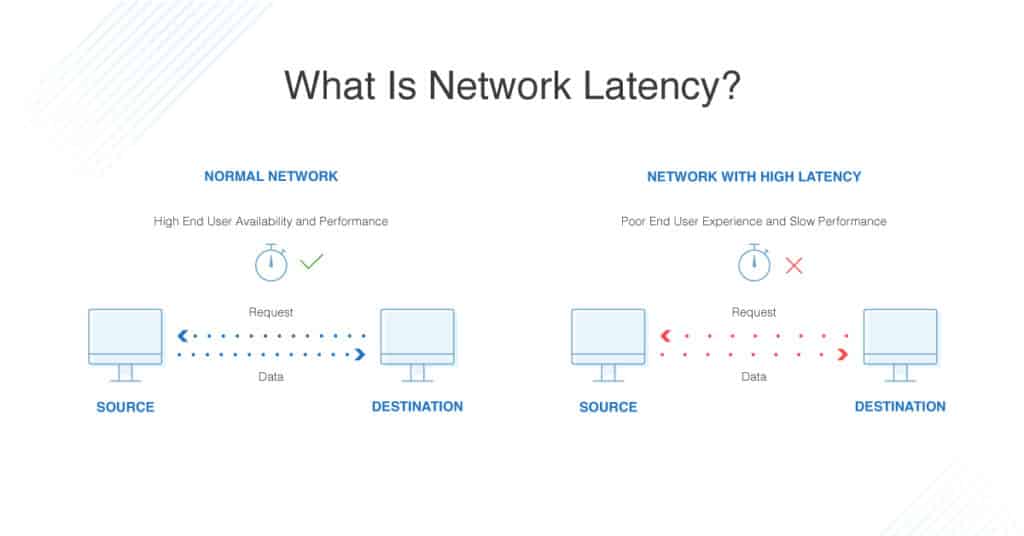Conversely, high-latency networks are those whose connections take a while to respond to requests. In this article, we will define latency, investigate its causes, and explore strategies for reducing it to improve the efficiency of your networks.
What is Network Latency?
As you make your way across a high-latency network, you’re always going to encounter communication obstacles. This means that you can’t use the maximum speed allowed by the network while transmitting the data. High-latency networks are not only inconvenient for the speed of your communications, but they may also negatively impact your performance altogether. When there is a delay, it may have both short-term and long-term implications on the network’s throughput. Deferrals’ origins are crucial to understanding their impact. This is the time it takes for a request to go from your software to the server and then back to your application again. Collectively, we aim toward zero network lag. However, despite these limitations, network delay is always present.
Causes of Network Latency
Below are some proven causes of Network Latency
1. Distance
The distance involving the client’s device making the request as well as the server receiving the request and transferring the appropriate response is a major contributor to the latency experienced by your network. If, for example, one of your locations is hosted in Japan and a customer in China asks to access it from their computer, there will be a slight delay of about 10 to 15 milliseconds.
2. Physical Issues
Problems with the hardware, such as switches, modems, connections, and so forth, that carry data from one device to another are usually the root cause of network delay. Furthermore, application load balancers, sent security devices, and even firewalls, VPNs, and Intrusion Prevention Systems (IPS) may all contribute to data packet delay in the network infrastructure.
3. End-User Issues
Most networks feature an access layer that provides connected devices with 1Gbps of bandwidth. Although the uplinks can achieve maximum throughputs of 1 Gbps; when combined, they can handle uplinks of 2, 4, and sometimes even 8 Gbps. However, the client’s device lacks enough hardware to handle the information transfer rates. The CPU cycles are too slow to respond in a reasonable amount of time, or the device’s storage is full, causing this kind of delay.
Conclusion
Therefore, this is the aspect of latency that requires your attention. Expected latency is 10 ms to 50 ms, surprising lag is anything above 50 ms, and if your connectivity makes it over 100 ms latency, you should get in touch with your service provider and request that they repair the problem so you can use the network at its optimal speed. Latency is determined by a number of factors related to the network as well as the hardware you are using to connect to the network.

